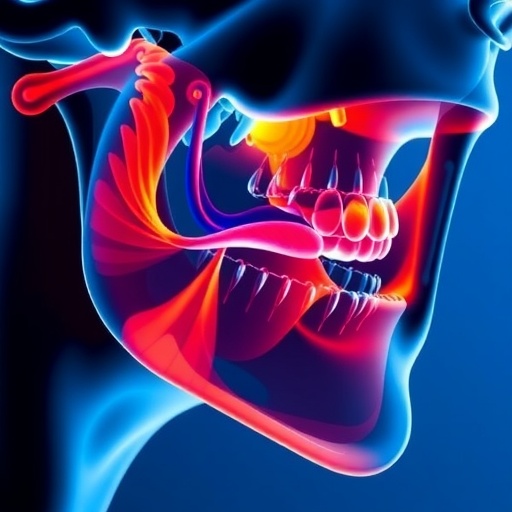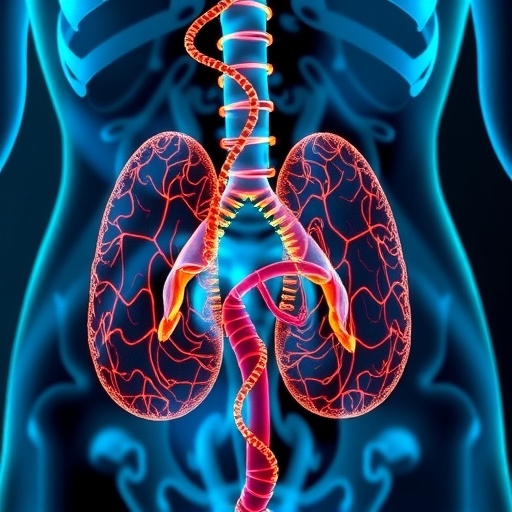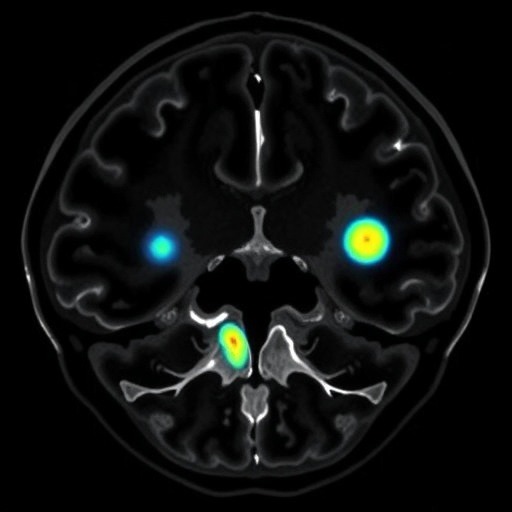Oral cavity cancers represent a significant global health concern, with rising incidence rates and substantial mortality associated with advanced stages of the disease. Recent research has illuminated a critical aspect of the prognostic landscape of these malignancies: extranodal extension (ENE). Defined as the infiltration of cancer cells beyond the bounds of lymph nodes into adjacent tissues, ENE has emerged as a key factor influencing treatment outcomes and survival rates. In a meticulous retrospective analysis, Thakur and colleagues delve into the implications of ENE in patients with oral cavity cancers, arguing that its presence necessitates a re-evaluation of therapeutic strategies.
The significance of studying ENE arises from its potential to reshape treatment paradigms for oral cavity cancers. This retrospective analysis underscores ENE as a harbinger of aggressive disease behavior, marking patients with this feature for enhanced scrutiny and intervention. Previous studies have indicated that the presence of ENE correlates with poor prognostic outcomes, often translating to a higher likelihood of recurrence and decreased overall survival. Thakur et al. provide compelling evidence to support these assertions, reiterating the need for heightened awareness among clinicians regarding ENE’s role in guiding therapeutic decisions.
In their analysis, the authors quantify the prognostic impact of ENE on various patient cohorts, revealing a clear association between ENE and diminished survival rates. By meticulously examining clinical data from a diverse group of patients, the researchers identify how the presence of ENE alters the course of the disease, often requiring a more aggressive treatment approach. This insight is particularly relevant in the context of personalized medicine, where tailoring therapy to the individual characteristics of a tumor is paramount. The authors argue that understanding the nuances of ENE can lead to more effective treatment regimens.
The findings have profound implications for the management of patients with oral cavity cancers. Traditionally, treatment for these cancers has followed a standard protocol primarily based on tumor staging, but this study suggests a shift towards incorporating ENE as a critical variable in treatment planning. For instance, patients exhibiting ENE may benefit from more intensive therapies, such as chemoradiation, as opposed to surgery alone. This could lead to improved outcomes and reduced recurrence rates, effectively altering the trajectory of treatment for those most at risk.
Moreover, the research highlights the necessity for oncology professionals to engage in discussions regarding the significance of ENE during multidisciplinary tumor board meetings. Oncologists, surgeons, and radiologists must collaborate to devise comprehensive treatment strategies that account for ENE’s presence. Integrating ENE into routine clinical assessments can facilitate a more tailored therapeutic approach, ensuring that patients receive care that corresponds with the aggressiveness of their disease.
As the medical community continues to grapple with the complexities of cancer treatment, understanding the biological underpinnings of ENE enhances the broader discourse on tumor behavior and response to therapy. The authors elucidate how ENE may serve as a biological indicator of tumor aggressiveness, suggesting that the underlying mechanisms driving this feature could provide further insights into the disease process. Research aimed at elucidating these mechanisms can reveal potential therapeutic targets, ultimately contributing to the development of novel treatment modalities.
In terms of patient outcomes, the study by Thakur et al. aligns with a growing body of literature advocating for the integration of prognostic factors into clinical practice. Historically, the landscape of cancer treatment has been primarily focused on histological classifications and staging. However, with emerging evidence emphasizing markers like ENE, clinicians are urged to adopt a more holistic approach in evaluating risk and tailoring therapies accordingly. The need for continuous education and training in recognizing the implications of ENE is apparent, as it equips healthcare providers to deliver informed and effective care.
The implications of this research extend beyond immediate clinical applications; they pave the way for future investigations aimed at refining diagnostic and therapeutic frameworks for oral cavity cancers. As healthcare systems worldwide grapple with the complexities of cancer care, the integration of studies such as this one into practice can facilitate the development of evidence-based guidelines that incorporate prognostic markers like ENE. This evolution in cancer management fosters an environment where patient outcomes become significantly improved, driven by a foundation of robust clinical evidence.
In light of the findings, the researchers advocate for the necessity of incorporating ENE into staging systems and clinical guidelines. The incorporation of extensive clinical data enables healthcare professionals to better stratify patient risk and customize treatment approaches based on individual prognostic factors. Emphasizing collaborative efforts among oncologists, radiation therapists, and surgeons will yield a more comprehensive understanding of how best to combat the complexities of oral cavity cancers.
In conclusion, the retrospective analysis conducted by Thakur and colleagues elucidates the critical role of extranodal extension as a prognostic factor in oral cavity cancers. As the medical community seeks to enhance treatment outcomes for patients undergoing therapy, understanding the implications of ENE becomes imperative. This research not only amplifies the importance of ENE in clinical decision-making but also sets the stage for future exploration aimed at establishing more effective management strategies. By emphasizing the prognostic potential of ENE, the authors have created a compelling case for its integration into modern oncological practice, ultimately advancing the field of cancer care.
Moreover, ongoing research should continue to examine the interplay between ENE and treatment outcomes. Investigating the biological mechanisms by which ENE influences tumor behavior could uncover innovative therapeutic targets and pathways. Such insights may yield new strategies that not only improve survival rates for affected individuals but also enrich our understanding of tumor biology, leading to broader applications in oncology.
As we move forward into an era of precision medicine, the study of extralymphatic manifestations such as ENE will undoubtedly play a pivotal role in personalizing cancer treatment. By harnessing the knowledge gleaned from retrospective analyses, forward-thinking oncologists can implement change in clinical practice that stands to greatly benefit patients. The future of oral cavity cancer treatment lies in how well we can leverage findings like those presented by Thakur et al., merging rigorous science with impactful patient care strategies.
Through concerted efforts and continuous research, the complexities of oral cavity cancers can be navigated, fostering hope amidst a challenging landscape. The findings on ENE not only beckon a re-evaluation of treatment methodologies but underscore the dynamic nature of cancer as a disease that requires adaptability, innovation, and a patient-centric approach to care.
As we reflect on the implications of this research, let us remain committed to advancing our understanding of oral cavity cancers and their management. Collaborating across disciplines, sharing insights, and embracing novel findings will be essential as we redefine the standards of care, paving the way for a brighter future in oncology.
Subject of Research: Prognostic impact of extranodal extension in oral cavity cancers
Article Title: Prognostic impact of extranodal extension in oral cavity cancers: a retrospective analysis and implications for treatment intensification
Article References:
Thakur, P., I, V., Dwivedi, A. et al. Prognostic impact of extranodal extension in oral cavity cancers: a retrospective analysis and implications for treatment intensification.
J Cancer Res Clin Oncol 151, 314 (2025). https://doi.org/10.1007/s00432-025-06337-0
Image Credits: AI Generated
DOI: https://doi.org/10.1007/s00432-025-06337-0
Keywords: Extranodal extension, oral cavity cancers, prognostic factors, treatment intensification, personalized medicine, cancer prognosis.
Tags: aggressive cancer behaviorcancer prognosis and treatment decisionscancer recurrence risk factorsCancer Treatment Strategiesextranodal extension in oral cancerlymph node involvement in canceroral cancer mortality ratesoral cavity cancer prognosisRetrospective analysis of cancer outcomessignificance of ENE in oncologysurvival rates in oral cancertherapeutic implications of ENE





